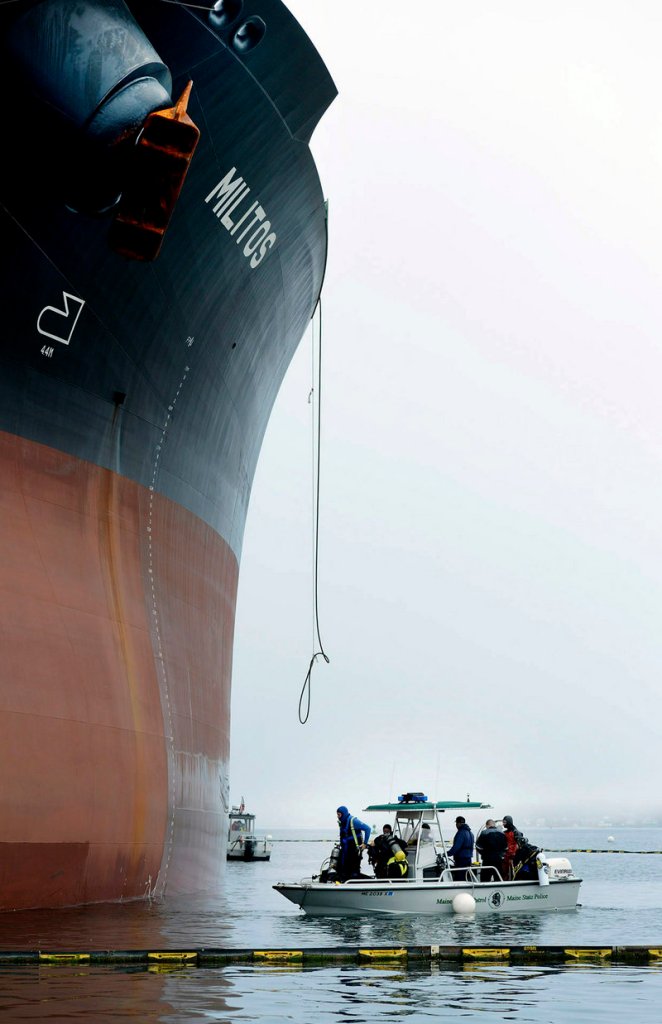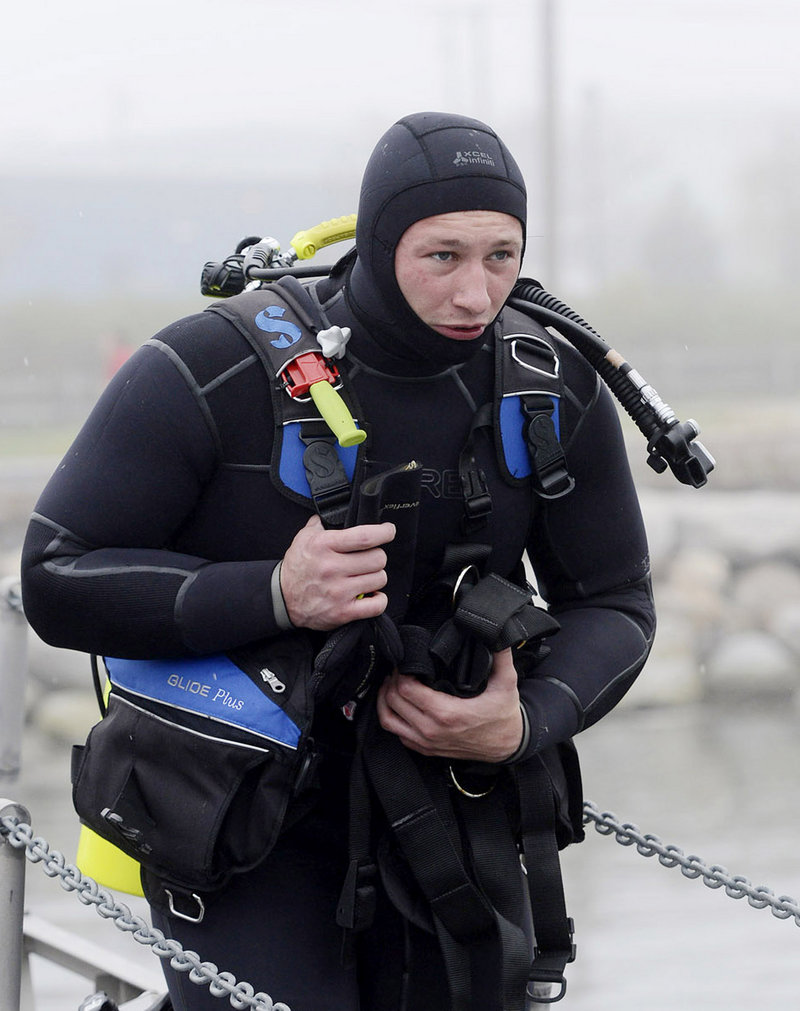PORTLAND HARBOR – Sgt. Andrew Hutchings worked his way methodically down the submerged hull of the 800-foot-long oil tanker Militos, searching for a gray disk the size of a dinner plate.
As he descended 10, 20, 30 feet into the water, he scanned the red hull as far as he could see -– which in the typically murky water at the mouth of Portland Harbor was about 10 feet.
The disk was a simulated explosive and the dive was part of a training exercise funded by a $44,000 grant from the U.S. Department of Homeland Security’s port security program.
“I never dove on a ship quite this large,” said Hutchings, from the Portland Police Department.
Participating in the weeklong hazardous-device search course were 16 law enforcement divers, from the joint Portland-South Portland dive team, the Maine State Police and the Cumberland County Sheriff’s Office.
Nationwide, seven ports are considered Group I ports, at the highest risk of attack. Portland is one of 48 Group II ports, signifying the second-highest risk, largely because of the importance of the Portland Pipe Line, where the Militos was tied up, just off Bug Light in South Portland.
“Now we’ll actually have the ability to … send divers in, if the threat level requires it … and look for devices that pose a hazard,” said South Portland police Lt. Frank Clark.
The training, provided by Navy SEALs, is designed to increase the port’s ability to respond if the threat level increases. Maine State Police divers have done such searches in the past, he said.
A terrorist attack in another port would raise the maritime security level in Portland Harbor, possibly requiring inspection of all ships’ hulls before they come into port, Clark said. This week’s training will enable the departments to do that.
If divers found an explosive device, they would call in the Navy’s underwater-explosive specialists, Clark said.
The training included searches of the bottom of the Machigonne II, a Casco Bay ferry. Divers used magnets on the hull to mark their progress.
The Militos was different.
“Next to a boat that size … you can actually feel it as well as hear it,” Hutchings said. “Everything is idling and they’re still running stuff.”
The Militos and Portland Pipe Line Corp. agreed to let the divers do a training dive Thursday while the ship finished unloading crude oil.
Part of the training involved going on board and locking down certain ship functions that might pose a risk to divers, including the giant propellers and the powerful intake ports that suck water into the ship for cooling and ballast.
The pumps are so strong that they can suck a diver into the intake from 50 feet away, Clark said.
One challenge of a search is covering every inch where a device might be, sticking to the search pattern while currents tug the floating diver.
On Thursday, divers used ropes descending from floats to keep track of where they were. As the hull cast the bottom in shadow, they used hand-held and helmet-mounted lights.
In the support boat on the surface, a diver held a rope attached to the diver below. The two could use the rope to communicate and, in an emergency, the backup diver could follow it down to a distressed partner.
The first test dive was a success. The simulated explosive was found affixed to the hull about 25 feet down.
The conditions were close to ideal. In a real search, divers would be scouring a boat outside the mouth of the harbor, in a deep water anchorage where the seas can get rough.
This story was updated at 10:04 a.m. on Friday May 10 to clarify that the tanker Militos was unloading crude oil.
David Hench can be contacted at 791-6327 or at:
dhench@pressherald.com
Send questions/comments to the editors.





Success. Please wait for the page to reload. If the page does not reload within 5 seconds, please refresh the page.
Enter your email and password to access comments.
Hi, to comment on stories you must . This profile is in addition to your subscription and website login.
Already have a commenting profile? .
Invalid username/password.
Please check your email to confirm and complete your registration.
Only subscribers are eligible to post comments. Please subscribe or login first for digital access. Here’s why.
Use the form below to reset your password. When you've submitted your account email, we will send an email with a reset code.